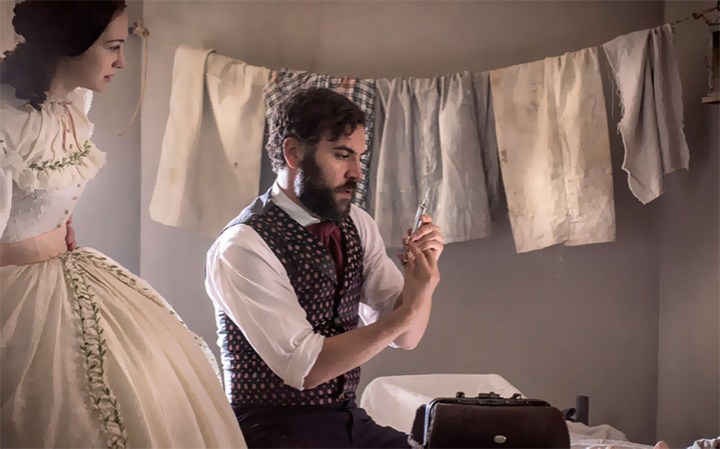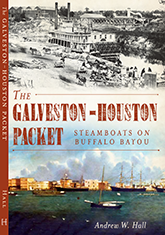Mercy Street, Episode 1


I just finished watching the first episode of Mercy Street online. I liked the episode, and I do think it’s a promising start. Others Everyone else has weighed in on the show already, but here are a few thoughts on the first episode (with some minor spoilers), in no particular order:


Emma Green (Hannah James), daughter of Mansion House’s proprietor, passes U.S. officers quartered in her family’s home.

The choice of Alexandria as a setting is useful, as it’s a location stable enough for a semi-permanent hospital, but close enough to the fighting that you have all sorts of people passing through — Union and Confederate soldiers, southern-sympathizing civilians, “contrabands,” free African Americans, and so on. It’s a polyglot setting, that works well for the drama in a way that most other cities would not.
The “New Nurse,” Mary Phinney (Mary Elizabeth Winstead) is a promising character, but (as BelleBlackburn at Civil War Talk pointed out) she has no noticeable accent at all. (Winstead is from North Carolina, so it’s just possible she can’t actually manage it.) It’s interesting to watch her character in the space of the first episode — which appears to take place in a single day — be forced to put aside some of her idealism and get to work.


Mary Phinney (Mary Elizabeth Winstead, left) encounters Anne Hastings (Tara Summers), a veteran of Florence Nightingale’s nursing service in the Crimea. There will be blood.

Anne Hastings (Tara Summers), the English nurse, strikes me as authentic, although somewhat exaggerated for dramatic effect. I can easily see Hastings as someone who, having served under Florence Nightingale — and picked up some of her personality traits as well as her skills and knowledge — would see herself as being placed to show these poor, benighted Americans how it’s done properly.
I wonder where the character name Frank Stringfellow originated. The Stringfellows were a prominent Virginia family — not quite FFVs, but near as dammit — and a family that was full of clergymen. One of them, the Rev. Thornton Stringfellow of Culpepper, Virginia, published a volume in 1856, arguing that chattel bondage was not only permitted by Holy Scripture, but was a positive blessing on those actually enslaved. Maybe Frank’s a cousin.


As Emma Green looks on, Dr. Jedediah Foster (Josh Radnor) prepares to give a morphine injection to calm a patient. Dr. Foster is clearly going to have an addiction problem later in the series.



The scene late in the episode between Phinney and Samuel Diggs (McKinley Belcher III), where the latter saves a soldier who is hemorrhaging (above), but because of his station as an African American laborer, cannot let on that he saved the man’s life, was an effective way of summing up the predicament a man like Diggs would find himself in, without being preachy about it.

The issue of slavery is continually coming up as a source of conflict in the dialogue — due in no small part to Phinney’s clear abolitionist leanings — but otherwise it’s handled more subtly. Interestingly, the one ominous racial incident, in the back yard behind the hospital, involved a man wearing a U.S. hospital steward’s insignia. (Blink and you missed it.)
The reference to Jacob Mendes Da Costa, and his description of “soldier’s heart,” is welcome and enlightening for the series, although it’s a bit premature in the spring of 1862; he didn’t actually publish on it until 1871.
Like others, I’m glad this series doesn’t treat CW medical personnel as though they were brutal and ignorant amateurs. They weren’t, anymore than physicians are today. Some were better, some were worse, but they weren’t incompetents.
This series seems to be off to a good start.






Frank Stringfellow was one of JEB Stuart’s most effective scouts.
Thanks, didn’t realize that.
Thanks. I hadn’t realized that Frank Stringfellow in the series was based on a real person. Going by a tree on Ancestry, they were first cousins. When researching Henry I looked at his uncles and siblings, but not the cousins.
Winstead actually grew up in Utah, but I agree that she didn’t sound like a New Englander. Another actor to watch is Cameron Monaghan, whose subdued Tom Fairfax was very different that the proto-Joker he recently in Gotham. The guy has some range.
Accents are always a problem. I wonder what RE Lee actually sounded like! Think Mark Twain and his numerous imitators. Indeed, remember JFK talking about “Cuber”? As for Lincoln, he wrote deathless prose but talked like the stereotypical Kentucky hillbilly that was his background. New York patrician and snob George Templeton Strong met Abraham Lincoln and wrote in his diary an attempt at reproducing Lincoln’s accent.
“Think Mark Twain and his numerous imitators.”
They’re all doing Hal Holbrook doing Mark Twain.
Personally, I’m dubious about Mercy Street. I wonder if the show runners ever read Louisa May Alcott’s Hospital Sketches, the letters she wrote home during her time of nursing in D.C. and were published, I believe, in Harper’s? Or Walt Whitman? As nurses they certainly made no difference between Union and Rebel in the treatment of their patients.
The hospital, the streets, the dresses, everything is way too clean and tidy.
It would have been interesting if this series had opened with the Union soldiers arriving at the notorious slave jail originally established by the notorious brutal Franklin and Armfield slave dealership. Isaac Franklin was the largest slave trader in the antebellum south, and got himself out of the business just in time to avoid the only crash in slave prices when Andy Jackson’s fiscal policies opened the longest and deepest depression in the U.S. until the Great Depression of the 1930’s.
In 1858, partners Charles M. Price and John Cook acquired the Franklin and Armfield property. Cook left the partnership soon after and was replaced by Birch. Soon the front facade was emblazoned with the name “Price, Birch & Co. Dealers in Slaves. Ahead of the Union troops arrival, they moved out with all their “merchandise” further south, leaving behind only a very old African American man, still chained by his neck to a post in the jail.